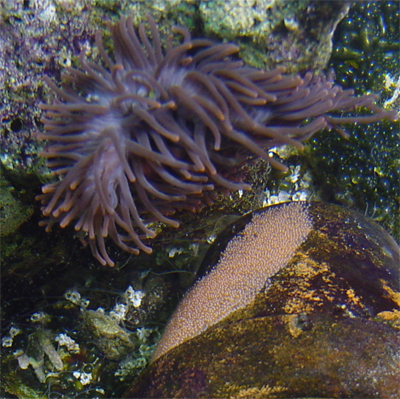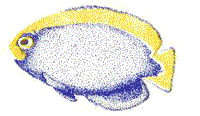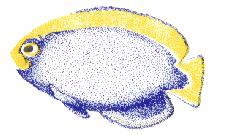|
Spawning Clownfish
By Stanley Brown
The Breeders Registry
The long awaited event will be preceded with a change in the behavior
of one or both of the pairs, although the male is commonly the first
to be observed with a change in behavior. This may be increased swimming
in the vicinity of the spawning site, active cleaning of the spawning site,
moving of substrate and rocks (it is amazing how such a small finish can
manage to move a sizable rock to the other side of the tank!), nipping
at fins and chasing.
The female will become more full in the abdomen and the ovipositor will
become extended and visible (a tube through which eggs are moved from the
body (deposited) to the spawning site located adjacent to the anus.
Egg laying has been reported happening at all times of the day and some
have indicated that it has occurred during darkness. My experience
that once a pair begins spawning with any regularity they will generally
spawn at the same time of day each time. The female lays the adhesive
eggs on the selected surface/site and then the male fertilizes them.

Egg masses vary in size and quantity. A. ocellaris may only lay
300 – 500 eggs per spawning whereas P. biaculeatus commonly
lays 1500 – 2000 eggs! Eggs are small slightly oval masses generally
1 – 2 mm in length. Coloration is generally pink to orange, but may
be yellow which may be indicative of a dietary deficiency in the adults’
diet.
i- Fautine, Daphne G. & Allen, Gerald, R., 1994,
Anemonefishes and their Host Sea Anemones, Tetra Press, Germany.
ii- Personal communication, 2000, Joe Lichtenbert, Reef
Propagation’s, USA.
iii- Ibid. i
iv- Moe, Martin Jr., A., 1989, The Marine Aquarium Reference:
Systems and Invertebrates, Green Turtle Publications, USA
v- Wilkerson, Joyce D., 1998, Clownfishes: A Guide to
their Captive Care, Breeding & Natural History; ,Microcosm Ltd.,
USA
vi- Brown, Stanley D., 1998, Low Tech Larval Trap,
The Journal of MaquaCulture, Vol 6:1-17 |
|












